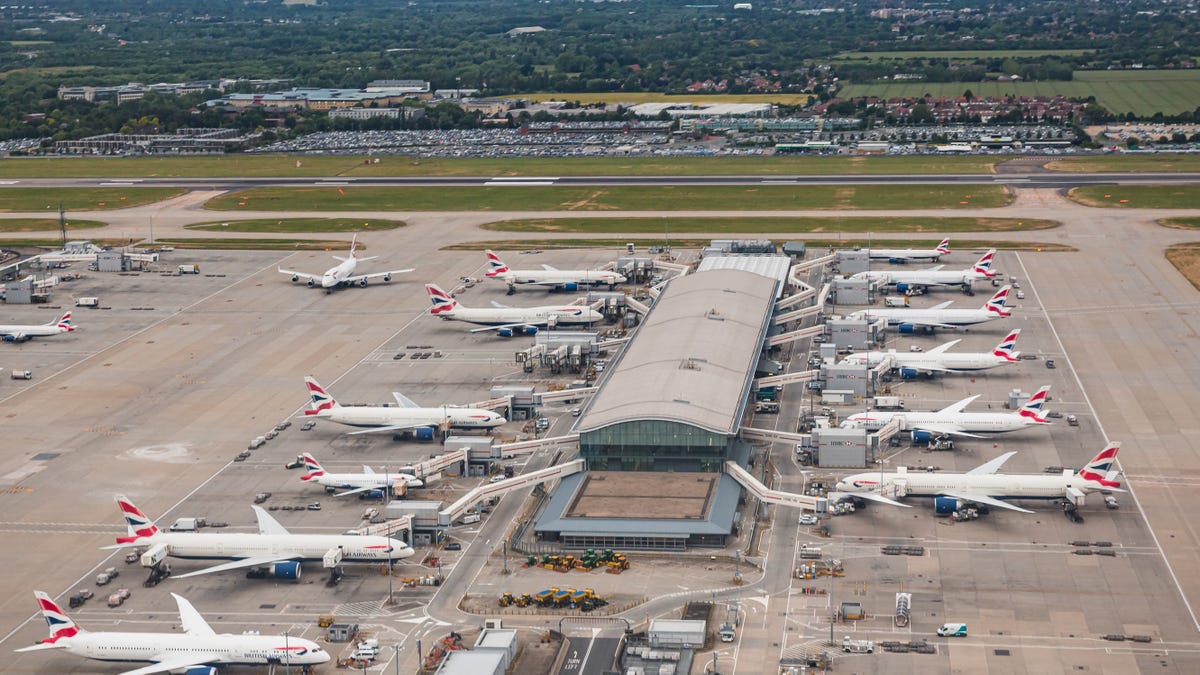What You Need to Know About Plane Operations Post-Pandemic - 5 minutes read
 Photo : Shutterstock
Photo : ShutterstockYou might’ve been a nervous flyer pre-pandemic, but there’s no question t ha t g etting on an airplane will be far more trepidatious for everyone as air travel slowly becomes a thing people do again . Owing to the health crisis of the past several months , planes around the world have been grounded, leaving us to wonder: W hat does it take to get them back up in the air?
Advertisement
Are planes like cars—will they be prone to stall if you leave them parked for too long? What needs to be done to get them ready to carry passengers again? And going forward, how will procedures change to keep them clean enough—and hopefully, safe enough—to ferry people across the globe while COVID-19 is still a major threat?
Here’s how airlines are keeping their planes in shape for travelers and employees during and after the pandemic.
Advertisement
Aircraft maintenance
With thousands of airplanes grounded around the world, it’s important to know how they’re being maintained. Thankfully, aircraft maintenance was considered an essential business long before the current crisis, and the practice has continued in the midst of the pandemic.
According to the Aircraft Owners and Pilots Association,
The requirements for proper maintenance and inspection are even more important if an aircraft has been sitting dormant during the crisis. Aircrafts begin to deteriorate from the moment that they are parked as the corrosion process starts on components that are no longer moving and receiving lubrication, seals begin to dry out, and the internal components of the engine lie dormant.
Advertisement
Y es, similar to a car, airplanes require certain routines to keep them flight-ready... it’s just a lot more expensive:
Rotating wheels every one to two weeks.
Covering up engines to keep animals from nesting inside.
Running the air conditioning to diminish humidity and moisture from inside of the cabin.
Oil and filter changes.
A irlines spend nearly $30,000 on annual maintenance costs for every plane that’s left to sit , according to Financial Times. So, it is safe to say that grounded planes will be flight-ready if and when there is a demand for them to fly in the future—or they will be replaced by newer planes.
Advertisement
Preparing the pilots
Even if, for pilots, flying a plane is like riding a bike , they must still meet cert ain requirements in order to be allowed back in charge of a commercial airliner . To fly, pilots need to comply with “recency” guidelines: they must have clocked a certain number of hours in the air and successfully carried out three takeoffs and landings within the previous 90 days in order to carry passengers . Unsurprisingly, flight training w as been deemed “essential” during the pandemic and while some guidelines have been modified during the shutdown, much of the training can still be accomplished in flight simulators, and pilots will still need to meet strict requirements before flying with passengers once again.
Advertisement
Pilots must do a License Proficiency Check every year to keep their licenses valid. These checks confirm a pilot’ s skills and knowledge meet industry standards at the highest level. Additionally, they have to perform an Operational Proficiency Check every 6 months for the specific airline they work for, proving they are knowledgeable about everything they need to be to operate that airline’s planes .
These checks can also include:
Night vision
Maneuvers
Communication and navigation
Cockpit check procedures
Airplane instrument
As General Aviation News reported, t he Federal Aviation Administration (FAA) recently drew up a memorandum to authorize continued testing of pilots under their guidelines during the shutdowns . Certain guidelines normally required for pilots to remain active fall under a three-month grace period, but pilots must request to be exempted from them in writing to the FAA .
Advertisement
Pilots, however, can currently go 90 days from their last flight before they have to demonstrate the required takeoffs and landings. Since domestic flights have still taken place, it is more than likely that flights will return in smaller waves and return to normal once there is more pilots and airline crews hired.
Keeping things clean
Airlines have been diligently creating new practices to keep planes better cleaned and sanitized for use during the pandemic. These procedures are extensive, in the hope they will better protect their employees and customers—and make us comfortable enough to fly again .
Advertisement
American Airlines
Cleaning procedures will be extended for American Airlines, which will be fogging their planes with Environmental Protection Agency (EPA) registered, hospital-grade disinfectants.
In customer areas, tray tables, seatbelt buckles, armrests, window shades and seatback screens. It also includes wiping door and overhead bin handles. In team member areas, enhanced galley cleaning, jumpseats and crew rest seats. The new enhancements add cockpit surfaces as well.
Advertisement
Delta
At the beginning of last month, Delta announced that they would be sanitizing every flight using electrostatic sprayers under their new Delta Clean program. These sprayers are electrically charged and spray liquid disinfectant in a mist form, like an outdoor sprinkler system . It will allow them to evenly clean floor to ceiling, armrests, seats, seatbacks, tray tables, doors and bathrooms.
Advertisement
After the sanitation process, employees will complete an additional checklist and wipe down common and employee areas prior to every flight.
United Airlines
United has teamed up with Clorox to develop the United CleanPlus program. In addition to using the electrostatic sprayers, United will also use H igh-E fficiency Particulate Arrestance ( HEPA) filters to help circulate air and remove up to 99.97% of airborne particles. You can get a look at their cleaning process in action here.
Source: Lifehacker.com
Powered by NewsAPI.org